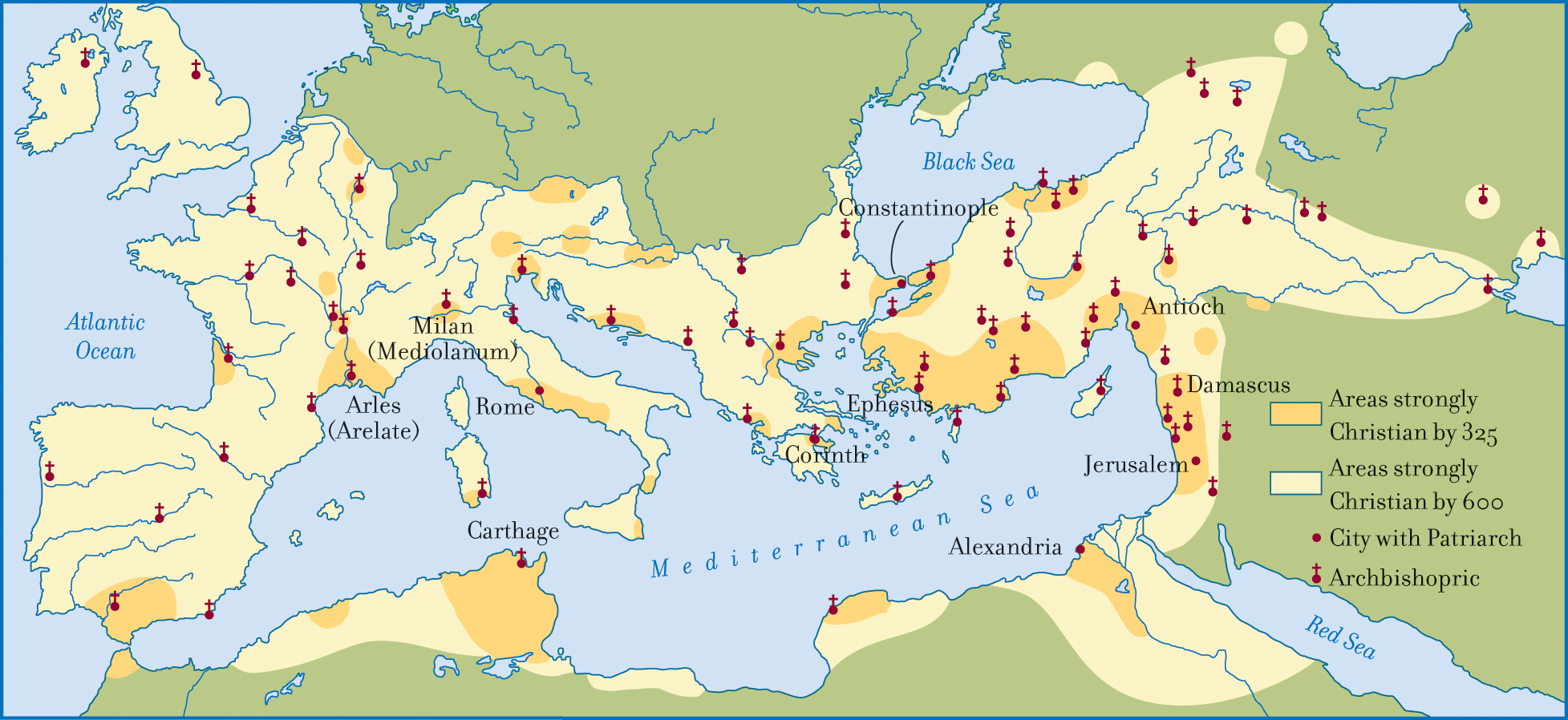
2
Chant and Secular Song in the Middle Ages
CHAPTER OUTLINE
PRELUDE
Two distinct bodies of song, one sacred (religious) and the other secular (worldly), flourished side by side during the Middle Ages — the thousand-year period that began with the fall of the Roman Empire in the fifth century. The sacred repertory, known as plainchant (eventually, Gregorian chant), was created for ceremonial use and served as a principal element in the communal liturgy, or public worship service, of the Western Christian Church; it was essentially musical prayer (or, in the case of the psalms, praise), the devotional words heightened through melody and rhythm. Nonsacred songs — called secular monody — were of two types: courtly and elite or popular and traditional. Both types were intended mainly for entertainment or for communicating feelings. Like songs of any age, these gave voice to the celebration of heroes, the expression of protest, and, especially, the pain and pleasure of love. All three repertories — one sacred and two secular — were primarily monophonic, although for secular song instrumental accompaniments were probably improvised, especially for dancing, marching, exhorting to battle, and so on. All three originated in oral cultures, and their texts and melodies were initially performed from memory according to formulas handed down by older singers or invented by new poet-composers. Chants and courtly songs were transmitted this way for many centuries before they were eventually written down in a gradually evolving notation that was developed in order to preserve the music, more or less accurately, for future generations. But for most people, music was purely oral, and most of the secular and nonliturgical music they heard, sang, and played has vanished. The second half of this chapter, then, of necessity focuses on the written repertory of courtly or aristocratic song that flourished in France in the late Middle Ages.
Christianity sprang from Jewish roots and spread westward from Jerusalem throughout the Roman Empire (see Figure 2.1). As the Western Christian liturgy was disseminated with its music, it changed and expanded over time; while the texts were relatively stable (they were written down hundreds of years before the melodies), the repertory of chant was more fluid, and the process of variation and expansion continued even after the advent of notation. Another important factor in the transmission and preservation of these melodies was their classification into church modes. Learned theorists who interpreted (and sometimes misinterpreted) Boethius, as well as teachers responsible for training student monks and nuns (who did not necessarily have any musical aptitude) to sing plainchant, created a system of medieval music theory and practice, at first based on practical considerations and then modified and elaborated from concepts inherited from the ancient Greek science of music. Other elements of this medieval system were newly invented — such as the syllables associated with sight-singing, which are still used in the classroom today.

More information
Like plainchant, the repertory of medieval song outside the Church comprised many different types and forms that had distinct functions and differing conventions. One kind was intended for performances of medieval drama (on both religious and secular subjects), while another was epic or lyric in style. Among the most artful and refined were the songs of the twelfth- and thirteenth-century poet-composers — called troubadours and trouvères — who wrote their own lyrics in either of the two principal French dialects of the time. Some features of these medieval lyrics are echoed in nineteenth-century art song (see Chapter 19) and even in modern rap: they all often deal openly with sensual subject matter, use coded language, and address some sort of coterie — a group of aristocrats at court, a closed circle of friends, or a commercial audience of fans.